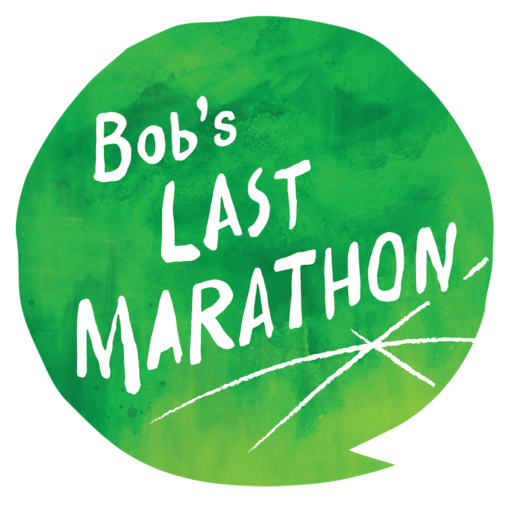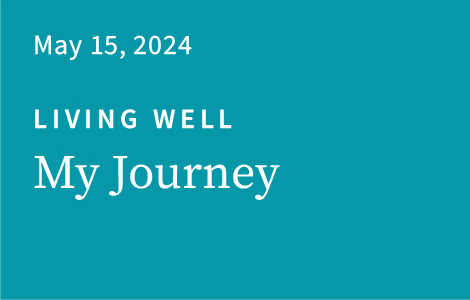Transcript
My Journey
It seems only yesterday that the Bob’s Last Marathon podcast made its debut, with the generous and compassionate support of people around me. We tackled the basics—the essentials that the person with dementia needs to live as normally as possible, and tips on survival for family and friends. We addressed specific areas of challenge—communication, agitation, and disorientation are just a few examples of the topics we covered. We talked about legal and financial ramifications of dementia—and the general lack of government support—and showcased examples of how families cope. We made a bold assumption—that good quality of life is possible, even with dementia. And we showed how social workers and specialists in different fields such as music, art, dance, and theater can help bring joy to the lives of those with dementia—and their families. We touched on family dynamics, and how a dementia diagnosis changes our social life and our relationship with friends. We talked about the unthinkable—the devastation of ambiguous loss, hospice care, and facing the end of the journey. Importantly, we based the information we shared on good science, and we invited thought leaders to offer updates on scientific and clinical developments.
In the past few years, we have watched the response to Alzheimer’s disease and related dementias evolve from little discussion, poor resources, and stigmatizing to general recognition—and dare I say acceptance—of their significance within our aging population. We are beginning to see infrastructures evolve—support groups, caregiving techniques and caregiver education, and non-drug interventional programs, especially at major Alzheimer’s Disease Research Centers, or ADRCs, around the country. Lately, we have begun to get glimpses of good news—that clinical research has started to come to fruition, making significant strides in unraveling the disease mechanisms of many types of dementia and improving our understanding of how to diagnose each of them. Above all, there is a glimmer of hope that therapeutic treatments are on the horizon.
It is with this sense of optimism that I believe that the time has come for me to support the field of Alzheimer’s disease—the people who are afflicted, and those around them—in a different way. Today marks the 75th episode of Bob’s Last Marathon—yes, 75 episodes—and I want to do justice to all who have contributed to this rich content by focusing our energy and resources on bringing this wealth of information to more people who can benefit from it. Reaching beyond our thousands of listeners and people who follow us on social media today, to the tens of thousands, and more, of those who can benefit from the knowledge that our experts, professionals, and my fellow caregivers have so generously contributed. With the guidance of our advisory board, we will transfer all assets—content and branding—to the Penn Memory Center, where work will continue in making our learnings available to all who need them. In doing so, I hope to promulgate our content, share our spirit of service, and, above all, honor the memory of Bob and the many people who have faced the devastation of dementia with courage and dignity.
I want to take a moment to thank my team—the people who make all of this happen. Audrey Moh, our art director and designer, created the visual identity for Bob’s Last Marathon and tirelessly executes and manages all things visual for us—the website, the transcripts, and social media posts. Monchu Chen, computer scientist, makes all things IT happen, in all media. He navigates the various podcast platforms, our website, and YouTube, so that our listeners don’t have to. Gloria Buonocore, copy editor, applies a level of rigor in grammar and stylistic consistency no one else can, all with the goal of making communication clear and easy to understand. Marietta Brill, scriptwriter, is the voice behind many of our episodes, the storyteller that I often wish I could be. Sean O’Neil, whom our speakers have come to know as our ultra-professional audio producer, gently but firmly draws out the best from us to give our listeners a good experience. Jill Amstutz and Rob Buccino guided us in the early days as we researched and developed Bob’s Last Marathon, helping define who we are today.
Many guest speakers have lent their expertise and support to our program. Katie Brandt and Judy Johanson, Mass General Hospital, became my good friends as we shared tears and joys of our journeys.
A special shout-out to Dr. Barry Jacobs, who generously shared his personal and professional experience and took the time to give me pointers about expanding our audience reach.
Above all, my gratitude to my advisory board. Stefani Bonigut is a social worker in the San Francisco Bay Area. The one thing I can say about Stefani is that I never left her support group—from way back when, when Bob and I first walked into the offices of the Alzheimer’s Association. Felicia Greenfield, Penn Memory Center, generously shares her experience and new ideas about caregiving in so many different ways. And Steven Arnold, Mass General Hospital, whom I know as the most compassionate doctor I’ve ever met. Dr. Arnold guided me through Bob’s illness and, with an open heart and an open mind, supported me as I planned and launched the Bob’s Last Marathon podcast.
I want to close with a favorite moment in our podcast, a quote from John O’Donohue.
“On our farm in the winter, we put the cattle out on the mountains into the winterage. … Because the landscape is bleak, there is little shelter. Every so often out there, one notices semicircular walls. The cattle know them well. These are the ‘sheltering walls’ when winds and storms blow up.”
Lena Chow Kuhar

